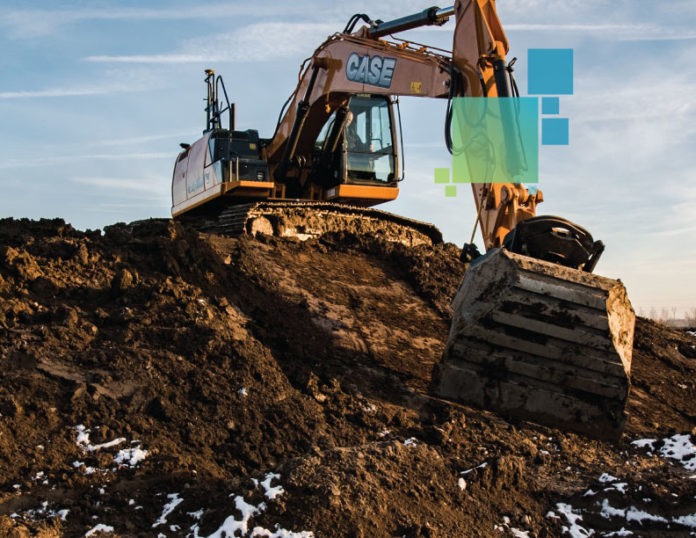Few contractors turn to a single manufacturer for their equipment needs but deploying multiple brands could lead to problems with different manufacturers’ equipment communicating with one another.
Unless they work with a partner that fully integrates with any technology from any company, that is.
When it comes to technology, contractors have a choice between factory-fit and after-market. There are benefits to both, but contractors must weigh which is best for their company.
The right approach largely boils down to how an organization manages its fleet of equipment. What works for one organization may not work for another, which is why it is critical to find solutions that are suited to the specific needs at hand; no one wants a technology that doesn’t solve a problem or that is underused.
There are certainly financial benefits of going with after-market solutions instead of factory-fit solutions. Similarly, the support and service environment differs for both options.
Pros: Factory-Fit Solution
Because an OEM installs factory-fit solutions during the build, they cannot be removed from a piece of equipment, whether it’s a dozer, grader or excavator. Most heavy equipment manufacturers offer factory-fit solutions.
Factory-fit solutions do offer several benefits to the end-user.
For example, financing the actual machine and the machine control technology becomes more accessible. It’s one package offered through one company.
Factory-fit installations focus on uniform integration of the wiring and are more convenient for the purchaser. Customers often have the option to rent a machine equipped with a factory-fit solution, so they don’t have to factor in the purchase of technology into their construction bids.
Cons: Factory-Fit Solution
Conversely, factory-fit technology does have some negatives for customers.
Most heavy equipment manufacturers only offer one brand of factory-fit machine control, though some provide third-party solutions as part of their offerings.
A heavy civil contractor operating mixed fleets could encounter a problem. Consider a contractor that runs heavy equipment from three different manufacturers. The contractor must train their operators on a trio of user interfaces, which is a potential nightmare.
Similarly, if a customer has a mixed fleet with factory fit technology already installed, the customer must go through multiple companies for support/service, depending on the heavy equipment brand experiencing issues.
When you have issues with technology on the jobsite that involve multiple technology brands trying to communicate with one another, how do you identify within which brand the problem lies? At the end of the day, the customer is stuck in the middle losing production time and patience.
All variants of factory-fit solutions offered by heavy equipment manufacturers require different data files, including design, surface and calibration. This means the customer must at least double their data preparation efforts if they use multiple machine control technology brands.
An Open-Architecture Approach
Leica Geosystems is the only brand that openly supports a brand-agnostic approach to heavy civil contractor technology needs.
An open-architecture approach is customer-centric, which is not typical with competitors who often require brand loyalty for their systems to operate effectively. This method can be dangerous for the end customer, as they often work on construction sites with sub-contractors using various technology brands.
Depending on how often a customer replaces their heavy equipment fleets, they may lose their technology investment if the machine has a factory-fit machine control system installed.
On average, most technology manufacturers release new versions of machine control solutions every five or so years. If a customer turns their heavy equipment fleet more often than every five years, they could lose the technology investment because factory-fit solutions cannot be removed from one machine and put on another.
Factory-fit means the solution stays on the machine forever. This is a problem because most customers like to have the option of transferring their machine control system from one device to another as needed, such as using it on a dozer today and an excavator tomorrow.
This ability to use technology interchangeably is vital for customers trying to maximize their budgets for technology. If the customer chooses factory-fit, they cannot use that system on other machines as needed and will be forced into buying more systems.
Pros: After-Market Solution
Contractors that plan on turning over their inventory often stand to lose their technology investment if they proceed with the factory-fit option.
Conversely, contractors can remove after-market technology and deploy it elsewhere, but it may require them to interact with various manufacturers.
After-market solutions allow customers to standardize their fleets on one construction technology brand when standardization is needed to combat the potential issues listed above.
Leica can install after-market solutions on most heavy equipment make and model of machines, so standardization can be easy, and it is the safest investment for the end-user.
When end-users choose to purchase after-market systems from one technology brand, they create a single source for all training, support and service needs — a one-stop-shop environment.
They gain the ability to transfer machine control systems from one machine to another, as needed.
They maximize their technology investment, as they don’t lose the technology when choosing to upgrade their heavy equipment fleet. They can just transfer the after-market solution to the new machines as needed.
Heavy civil contractors have countless options, but they need to make sure whatever technology they select works for their needs, not just today but in the future. It’s hard to predict what lies ahead, so any solution should be adaptable because the jobsite of tomorrow may look vastly different than the jobsite of today. Otherwise, it could be a case of throwing good money after bad.






